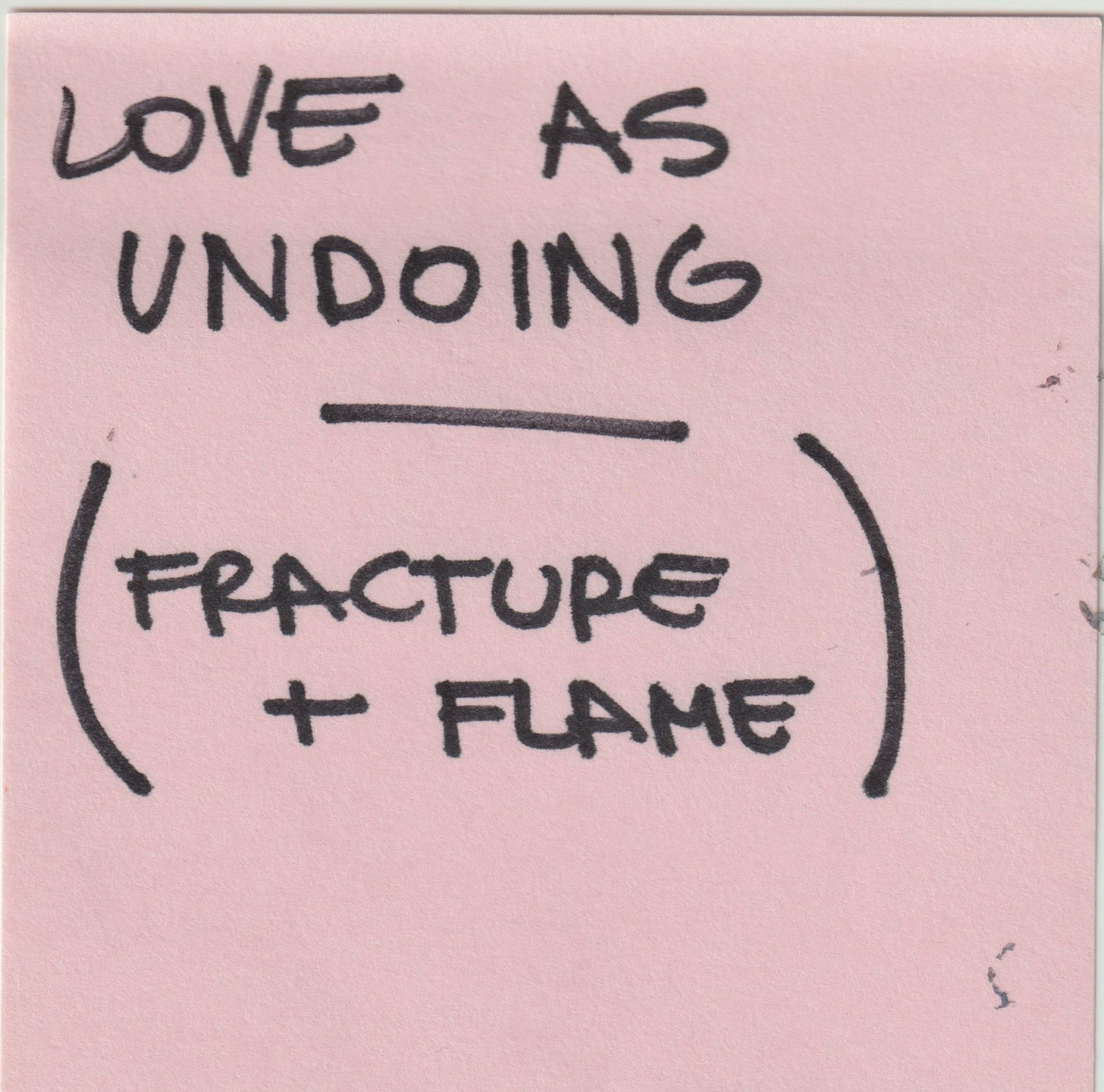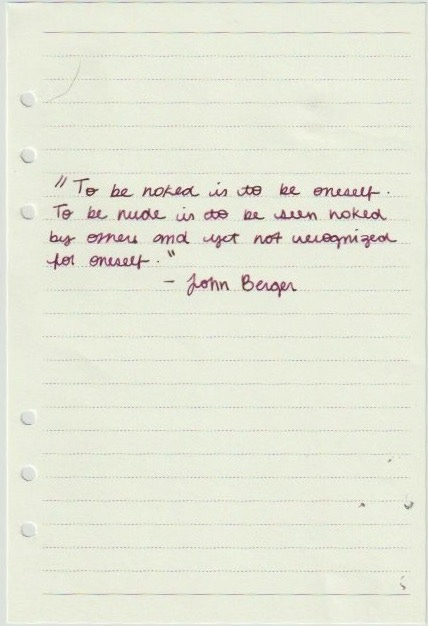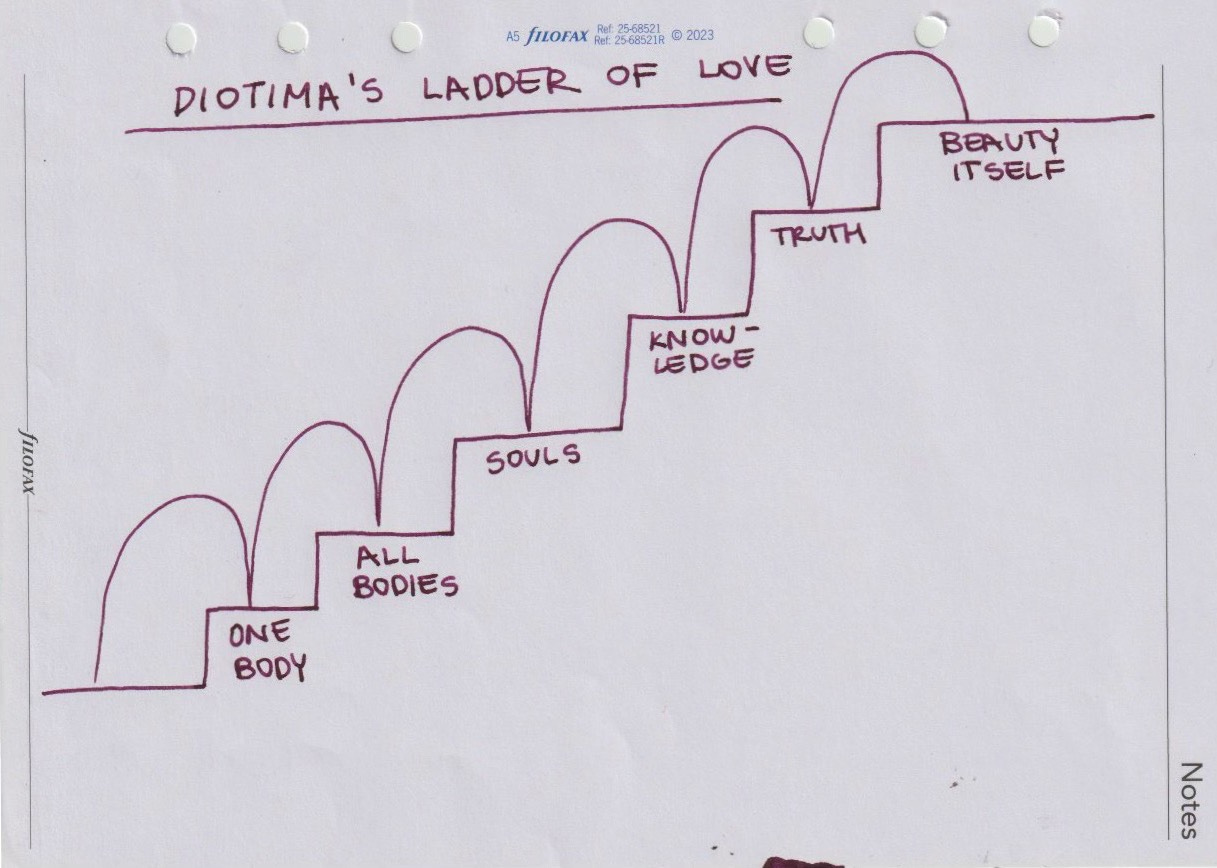When you think of cupid, what do you see?
I’m confident in guessing that, locked in your affectionate memory, the image you have is that of the classic valentine’s day chubby baby, in diapers, with curly hair, wings and a bow and arrow ready to make you fall madly and deeply in love with anyone who happens to walk your way. I’ll even dare to say that, that is the image we all share. We don’t really seem to see him as The God of Love anymore. When I started painting this I knew I wanted to paint a lover, but looking at the face of this stereotyped half naked baby, I simply couldn’t see a version of love I recognized.
First I needed to question and dismember what love looked like to me, so in that way I could start to re contextualize The God Of Love as a figure I recognized and understood. At the same time I also wanted to discover in what other ways has Eros been perceived and portrayed by other before me. I was not at all surprised to discover that very much like the act loving, the god of Love has many faces, however none of them matched the face in which I saw him. To me he came stripped bare, psychologically raw, palpable, broken open, vibrating in a place between the divine and the human. I recognize him like this because that is the love I know.
In many ways it seems as if this painting acts like an autopsy. In my work, I can see myself creating paintings that perform, paintings that document, and paintings, like this one, that are so radically vulnerable that they act more like an offering. And with every offering, I believe that there is always an attempt to rebuild a myth within our own language, as if it with this act of giving, in return, we can find a way of bringing the divine towards the mortal or vice versa.
Simplicity and negative space have always been things I have struggled with as an artist and as a woman, but when working on this, I knew that there was no element I could add in here, Eros needed to stand alone. Our eyes should go towards him and nothing else.
When you first look at the painting we see a winged, blue toned figure, neither recognizable male or female, not childlike nor adult. The figure is nude, how could it not be? It’s a very start and matter-of-fact nudity, there is no eroticism here. This isn’t the nude as western art history has taught us to see: the polished, inviting, plump and polished nude, posed for the gaze of the viewer. John Berger famously says: viewer. John Berger (who is one of my favorite art writers) famously wrote,
“To be naked is to be oneself. To be nude is to be seen naked by others and yet not recognized for oneself.” In most traditions of European painting, the nude exists for the pleasure of the watcher, not for the truth of the sitter. It is not about vulnerability, but availability.
I refused that contract, here there is no seduction, no performance of desire. Instead I wanted to show a kind of disarmed honesty, that nakedness that is private, ritualistic, sacred even. It doesn’t hide anything about itself, it doesn't ask to be seen. The body is not offered up, but simply is. It’s a body very much like mine and yours, without correct proportion, some would say even childlike in its depiction but at the same time it holds a maturity in its understand of it self. Its a body that is not made to entice, but to feel. A lovers body.
Eros in his earliest conception, was not a winged child, but a primordial force. In Hesiod’s Theogony, he is one of the first beings to emerge from Chaos, alongside Gaia (Earth) and Tartarus (the Abyss). Eros wasn’t a God of romantic love, he was a generative cosmic force, the principle of attraction, the glue that stand between the physical world and nothingness. He enables creation because he is the one who gives us a palpable feeling of being alive in the world, the is the desire that animates all life, that kind of desire that is as divine as gravity.
By the classic period Eros begins to take on more more anthropomorphic traits, often depicted as the mischievous adolescent, the beautiful sun of Aphrodite, this is the period where he gets his wings and arrows. Here he becomes hyper sensualized, they give him a dangerous, immature image. He becomes desire without reason, capricious and cruel.
Somewhere in the middle of these two faces, we find something interesting, a third perspective, one not made from poets and artists, but from philosophers. A very powerful portrait of love offered up in the middle of a drunken athenian dinner party: Plato’s “Symposium”
It’s a very strange text, with a blend of theatrics and theology, where a group of mean and woman gather to toast in numerous times, each time offering to us their own version of love. I guess there really isn’t truer words than drunk ones, because beneath all the wine and flattery, Eros as I recognized him begins to take shape, loosing his figure and and reawakening parts of his primordial force, here he becomes interestingly more human, he becomes a force that is more akin to a tension.
In the voice of the priestess Diotima, Plato introduces Eros as a daimon, something between mortal and divine. He is not love fulfilled, but love’s hunger. In plato’s eyes he is not the perfect child of Aphrodite, but the child of Poros (resource) and Penia (poverty), he is restless and needy, he doesn’t have beauty so he seeks it outside of himself, he is lack incarnate, and that is exactly what makes him divine. Diotima guides us through what she calls the “Ladder of Love”: first we fall in love with one body, then with all bodies, then with souls, with knowledge, with truth, until we are no longer loving a person but beauty itself, that of which is infinite. When we look at love like this we see that is not just about intimacy and pleasure, but ultimately about transcendence. It’s about being ruptured open by desire and then letting that rupture become a path.
This is really interesting to me, to see Eros framed not as indulgence, or an ancestral cosmic force, but as a form of initiation. Real love as a form of philosophy. When we love, deeply and vulnerably, we are not only wanting another person (that is only one step of the ladder), but we receive the opportunity of reaching towards the divine through them. This idea feels specially close to the version of Eros I wanted to paint, a liminal version, a spiritual ache, the thing that fractures us in order to show us something holy.
I met my husband when I was 14 years old, which means we have been together now for 13 years. In that time, my understanding of love has shifted and changed as many times as Eros has, maybe even more. In a relationship that has accompanied me through so many stages of my womanhood and maturity, it was only natural that I would witness and partake as many transformations as the God of Love.
Maybe there is a connection between Eros’s depictions and our own understanding of love as we mature.We are all hopeless romantics when were young, everyone is Romeo and everyone is Juliet, and all love lasts forever, because forever is an emotional eternity that in reality lasts 3 days. Is it a stretch to think that Eros in its winged baby depiction is really a mirror of young love?
I see this parallel repeat as I grow, as my love grows and I mature from a winged baby to a reckless hyper sensual teenager. With that my perspective of love changed as my body did, I discovered my sexuality, the eroticism of the Sun of Aphrodite in me.
This painting is my gospel, not in a religious sense, but in a deeply personal truth, in between a dream and a confession.
In reimagining, or understanding Eros, I wanted to five form to a theology of love as I have lived and endured: sacred, shattering, and transformative. The Eros I painted is a philosophical one, part primordial God, part human, part lover, part wound, part man, part woman.
After loving someone for the past 13 years, I’ve come to see love as a space not of perfection, but of perpetual transformation and becoming. I am not the same I was 13 years, neither is my partner. Change is constant, transformation is a necessity in order for love to stay. Now I understand love very differently from the two versions I have encountered before. Today I see love is a cataclysm. It shatters ego, because it is always about the other even when is about the self. It disorients the body and rearranges the soul, in a constant progression, it burns through who we thought we were and leaves us with someone we don’t yet recognize. And in that raw moment, we’re never more divine.
Love is a place where we are shaped and reshaped by another again, again and again.
This is not just the portrait of a God, this is an offering on love, loss and becoming, In a world where we have inherited so many version of the God of love, I’d like to think that he has the power to show himself differently for every person, constantly becoming undone, like us.









